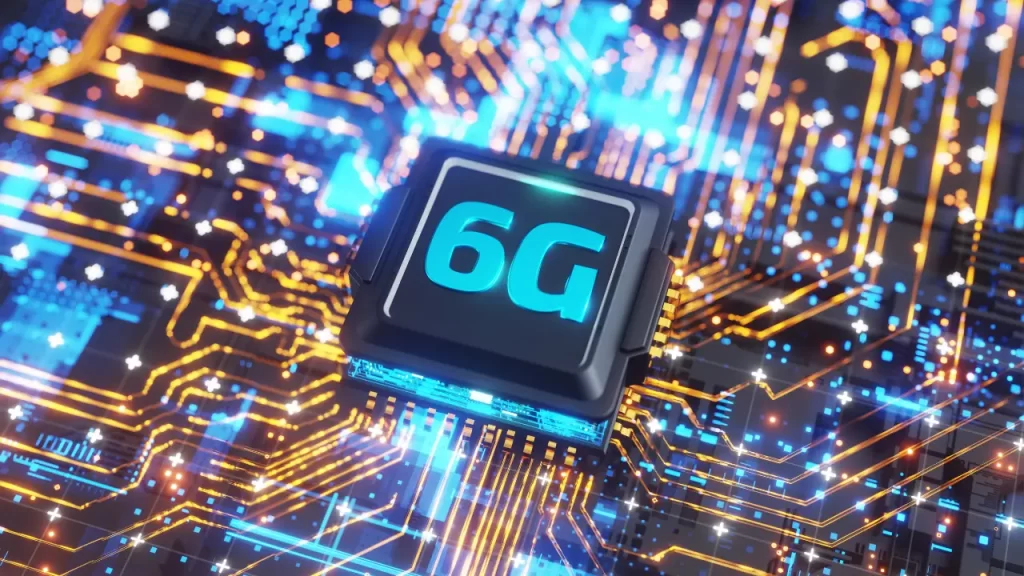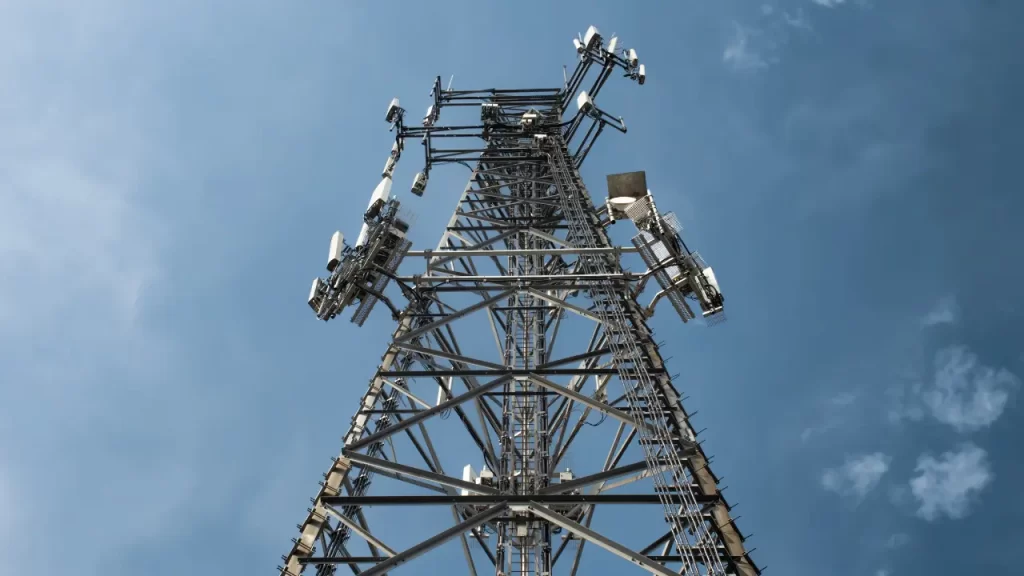What Is 6G Technology and How It Works: The Future of Wireless Connectivity

Introduction
Wireless technology has transformed the world, making communication and connectivity faster, smarter, and more reliable. From the first-generation networks (1G) that enabled basic voice calls to the current fifth-generation (5G) networks powering smart cities and autonomous cars, each step has been revolutionary. However, technology is constantly evolving, and the next significant advancement on the horizon is 6G technology.
6G is expected to be more than just faster internet speeds. It aims to create an interconnected digital world where data transfer happens almost instantly, smart devices communicate flawlessly, and artificial intelligence (AI) plays a critical role in optimising networks. The goal is not just higher speeds but also reduced latency, improved reliability, and universal connectivity.
As research continues worldwide, tech giants such as Samsung, Huawei, Nokia, and Ericsson are leading the race, supported by institutions like MIT, Stanford, and global governments. In this blog, we’ll break down what 6G technology is, how it works, and the incredible potential it holds for shaping our future.
What Is 6G Technology and How It Works
6G technology refers to the sixth generation of wireless communication networks, which is expected to deliver unprecedented speeds, ultra-low latency, and enhanced network reliability. While 5G networks revolutionised mobile connectivity with gigabit speeds, 6G is projected to operate in the terahertz (THz) frequency spectrum, enabling speeds of up to 1 terabit per second (Tbps).
At its core, 6G technology will integrate cutting-edge innovations such as Artificial Intelligence (AI), Machine Learning (ML), Edge Computing, and Quantum Communication. These technologies will work together to optimize network traffic, predict failures, and reduce energy consumption.
6G will also focus on real-time communication, with nearly zero delays in transmitting data. This will be crucial for applications like remote surgeries, smart traffic management, and augmented reality experiences. Additionally, holographic communication, where users can interact in real-time using 3D holograms, will become a reality with 6G.
In short, 6G aims to create a fully intelligent, interconnected, and immersive digital ecosystem that goes far beyond what we currently experience with 5G.
Is 6G Technology Available?

As of now, 6G technology is still in its early research and development phase. While it’s not commercially available yet, several companies, universities, and governments are investing heavily in 6G research and trials. Countries such as Japan, South Korea, China, and the United States have already launched initiatives to lead the global race in 6G technology.
Tech giants like Samsung and Huawei have been testing 6G prototypes in controlled environments, demonstrating promising results in terms of data speed and reliability. In the academic world, institutions like MIT and Stanford University are conducting extensive research into quantum communication, terahertz frequencies, and AI integration for 6G networks.
Experts predict that 6G networks will begin rolling out around 2030, with early pilot programs expected in specific regions by 2028. Until then, the focus remains on refining the technology, addressing technical barriers, and preparing the infrastructure for a global 6G rollout.
6G Explained: Understanding the Basics

Understanding 6G technology begins with recognizing how it differs from its predecessor, 5G. While 5G brought faster internet speeds, wider bandwidth, and improved reliability, 6G is expected to push these boundaries even further.
One of the primary differences is the frequency spectrum. While 5G operates on millimeter waves (24–100 GHz), 6G will utilise terahertz (THz) frequencies (100 GHz–10 THz). This shift will allow data transfer rates of up to 1 terabit per second (Tbps), making current internet speeds seem sluggish in comparison.
Another key aspect is ultra-low latency.With 6G, this latency will be reduced to just one millisecond or less, enabling instantaneous communication between devices.
Additionally, 6G will heavily rely on AI and Machine Learning to automate network management, predict potential issues, and ensure uninterrupted service. These technologies will create a self-optimising network, reducing human intervention and increasing efficiency.
In summary, 6G represents a leap towards an interconnected world where digital and physical spaces blend seamlessly, opening up opportunities for advanced technologies like holographic communication, real-time AR/VR experiences, and autonomous decision-making systems.
What Is 6G Network? Definition, Features, and Benefits

A 6G network refers to the next-generation wireless infrastructure designed to provide unprecedented communication capabilities. It builds upon the foundations of 5G while introducing advanced features to meet the growing demands of ultra-fast connectivity, smart automation, and low-latency applications.
Definition:
A 6G network will utilise terahertz (THz) frequencies to deliver incredibly high data speeds, real-time communication, and intelligent optimisation of network traffic using AI-powered algorithms.
Features:
- Unimaginable Speeds: Capable of reaching up to 1 Tbps.
- Ultra-Low Latency: Response times reduced to one millisecond or less.
- AI and ML Integration: Intelligent network management for real-time optimisation.
- Seamless Connectivity: Interoperability across diverse devices and platforms.
Benefits:
The potential benefits of 6G networks span across industries:
- Healthcare: Enable remote surgeries with zero latency.
- Education: Provide immersive VR classrooms for global education access.
- Smart Cities: Facilitate real-time traffic management and energy distribution.
The 6G network isn’t just about speed; it’s about creating a fully connected, intelligent ecosystem where devices, systems, and individuals interact seamlessly.
Conclusion
The development of 6G technology marks a significant leap in wireless communication, promising ultra-fast speeds, minimal latency, and seamless connectivity. While it’s still in its early stages, ongoing research by tech giants and academic institutions points toward a transformative digital future.
With the power to revolutionise healthcare, education, smart cities, and beyond, 6G isn’t just an upgrade, it’s the foundation for a smarter, more connected world.
The journey to 6G may be complex, but the potential it holds is limitless.
Frequently Asked Questions (FAQs)
1. What is 6G technology and how does it work?
6G technology is the sixth generation of wireless communication networks, expected to deliver unprecedented internet speeds, near-zero latency, and enhanced network reliability. It will operate on terahertz (THz) frequencies, enabling data transfer rates of up to 1 terabit per second (Tbps). Advanced technologies like Artificial Intelligence (AI), Machine Learning (ML), and Edge Computing will play a crucial role in optimizing network performance. 6G will enable real-time communication, support advanced augmented and virtual reality experiences, and even introduce holographic communication for immersive interactions.
2. Is 6G technology currently available?
No, 6G technology is not yet available for commercial use. It is still in the research and development phase, with countries like Japan, South Korea, China, and the United States investing heavily in its advancement. Leading tech companies such as Samsung, Huawei, Nokia, and research institutions like MIT and Stanford are actively working on 6G prototypes. Experts predict that early pilot projects may emerge around 2028, with full-scale deployment expected by 2030.
3. How will 6G WiFi differ from current WiFi?
6G WiFi will represent a massive upgrade over current WiFi technologies by offering extremely high speeds, ultra-low latency, and improved network efficiency. It will operate on higher frequency bands, likely in the terahertz (THz) spectrum, allowing it to deliver faster data transmission rates and support real-time applications like AR, VR, and IoT-based systems. Smart homes and businesses will benefit from seamless device connectivity, enhanced streaming quality, and instantaneous file transfers.
4. What industries will benefit the most from 6G?
Several industries will see transformative benefits from 6G technology:
- Healthcare: Remote surgeries and real-time patient monitoring with zero latency.
- Education: Immersive virtual classrooms and global access to quality education.
- Smart Cities: Intelligent traffic management, energy optimisation, and real-time urban planning.
- Entertainment: Enhanced augmented and virtual reality experiences.
- Manufacturing: Smart factories with automated systems powered by real-time data analytics.
6G will play a critical role in digitally transforming these sectors by enabling advanced applications that require massive data processing and low-latency connections.
5. What are the main challenges in implementing 6G networks?
While 6G technology holds immense potential, several challenges must be addressed:
- Technical Barriers: Ensuring stable communication on terahertz frequencies remains a challenge.
- High Costs: Developing and deploying 6G infrastructure will require significant investment.
- Regulatory Issues: Spectrum allocation and global standardisation need to be addressed.
- Energy Consumption: Managing power efficiency in high-speed, high-frequency networks is critical.
- Data Security: Protecting networks from cyber threats will require advanced encryption methods.
Overcoming these hurdles will require global cooperation, investment in research, and a strong focus on innovation and sustainability.
References
- Nokia Bell Labs – 6G Technology Overview – https://www.bell-labs.com/6g/
- MIT Technology Review – Future of Wireless Networks with 6G https://www.technologyreview.com/
- Ericsson – 6G Technology and Innovation Roadmap https://www.ericsson.com/en/6g
- World Economic Forum – The Role of 6G in Global Connectivity https://www.weforum.org/reports
- University of Oulu – 6G Flagship Research Program https://www.6gflagship.com/
- IBM – Exploring 6G and Its Capabilities https://www.ibm.com/topics/6g
